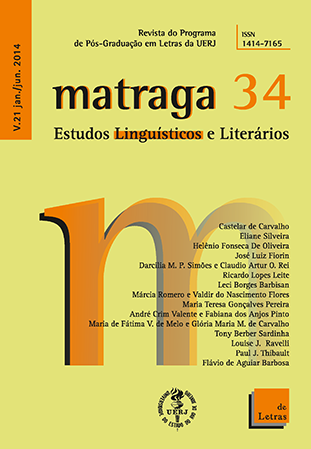MEMORY, ASSOCIATIVE AND SYNTAGMATIC COORDINATIONS, AND LINGUISTIC MICROGENESIS: IMPLICATIONS AND PROSPECTS FOR SAUSSURE’S THEORY OF LANGUAGE
Keywords:
Associative relations, memory, microgenesis, Saussure, value.Abstract
I take Saussure’s distinction between associative and syntagmatic relations in la langue as the starting point for a re-examination of the relationship between memory and language. Saussure’s remarks on this relationship are sparse and fragmentary, cast in terms of the now largely abandoned classical accounts of early neurologists such as Broca and Wernicke, who saw language in the brain as a series of interconnected cortical areas that were presumed to be the repositories of the neurophysiological processes of language function. I draw on Andy Clark’s (1993) idea of ‘associative engines’ to consider how the associative coordination of linguistic items involves (1) the potential for evolution to exploit the gap between gross environmental input to the organism and the input to specific neural networks; and (2) the potential for the language learner qua active agent to create some of its own learning environment. I then look at the ways in which the principle of the associative coordination of diverse series stored in long-term memory makes possible and gives rise to the analysis and segmentation of linguistic syntagms. This development, in turn, makes possible the detecting of the common part of diverse syntagms such that they can be replaced with more schematic ones. The resulting linguistic schema embodies functional constraints on the input data that are available to the learner and thus serve as a pedagogical device, which I call TEACHER FUNCTION. Jason Brown’s (1988) theory of microgenesis together with Deacon’s (1989) account of the dually ‘centrifugal’ and ‘centripetal’ flows of information in the brain provide the basis of a more coherent and complete account of the neural structure of language: The utterance is microgenetically elaborated as it ‘centrifugally’ unfolds over a sequence of neuroanatomical levels (e.g., limbic, generalised neocortex, sensorimotor cortex). On this basis, I articulate some links between Brown’s theory of microgenesis and some recent theories of memory and language. Centrifugally elaborating utterances also require what Deacon calls centripetally directed peripheral motorprogramming and somatosensory information. Agents draw upon their rich phonetic memory that is built up in firstperson experience to develop repertoires of exemplars of phonetic gestures. Rather than the instantiation of a secondorder system of types, language, through exemplar memory, is linked to the different ways in which agents have heard, felt and experienced particular phonetic gestures as they are embedded in the often affect-charged relational dynamics of real-time languaging between persons.
Downloads
Downloads
Published
How to Cite
Issue
Section
License
Authorization
Matraga – Scientific Journal of the Post-graduate Program in Arts and Humanities of UERJ is authorized to publish the article submitted here, if it is accepted for online publication. It is attested that the contribution is original, that it is not being submitted to another publisher for publication, and that this statement is the expression of truth.
The works published in Matraga's virtual space – Scientific Journal of the Post-graduate Program in Arts and Humanities of UERJ will be automatically transferred, and your copyright is reserved to Matraga. Its reproduction, in whole or in part, is conditional on the citation of the authors and the data of the publication.

Matraga uses license Creative Commons - Attribution-Non-Commercial 4.0 International.





